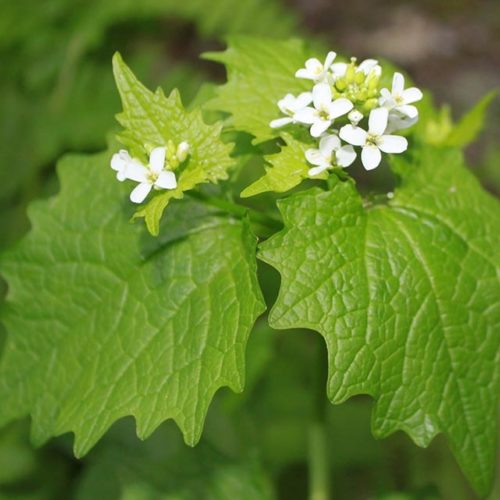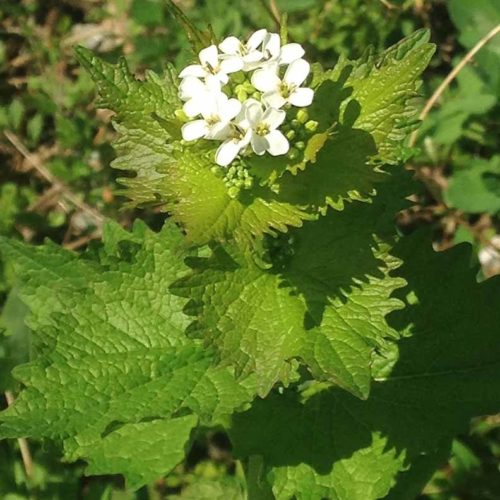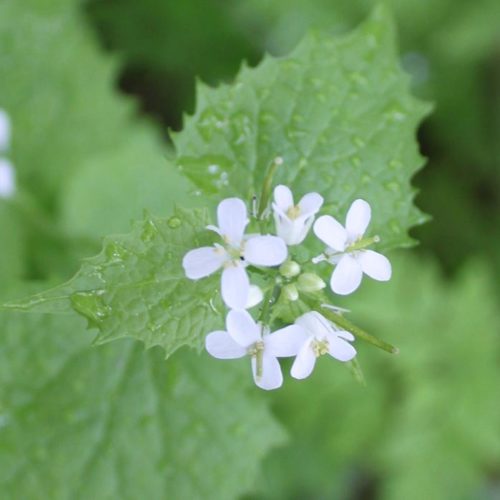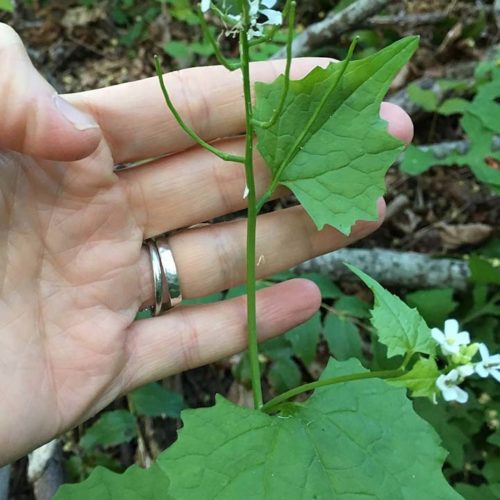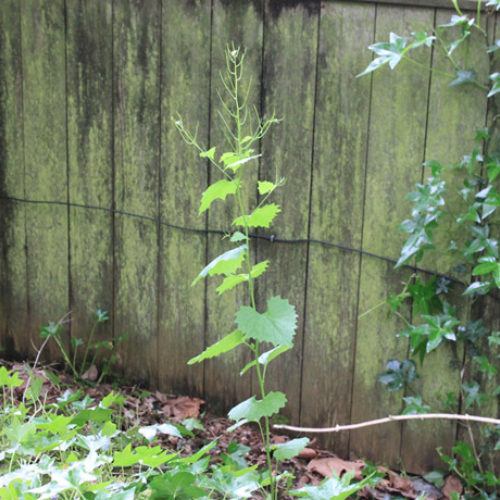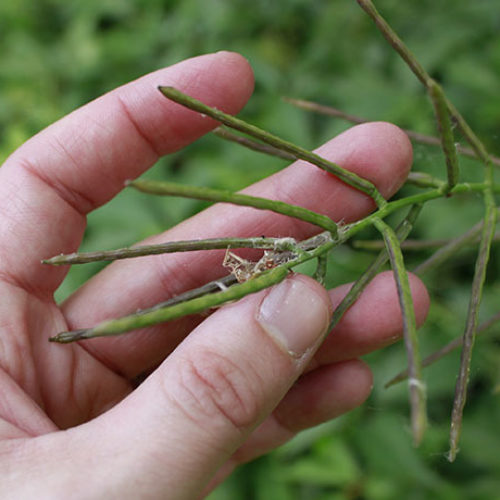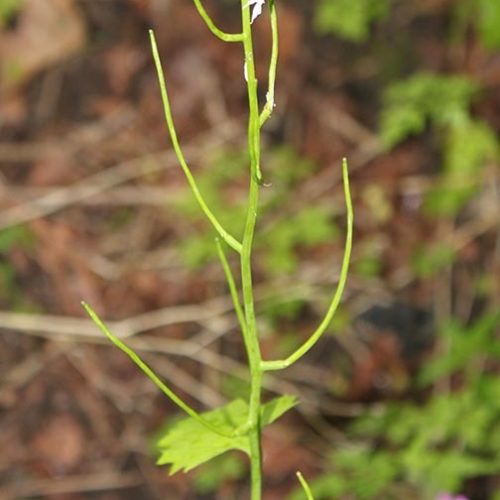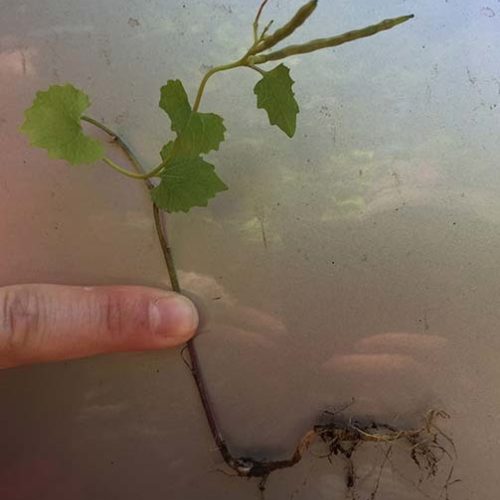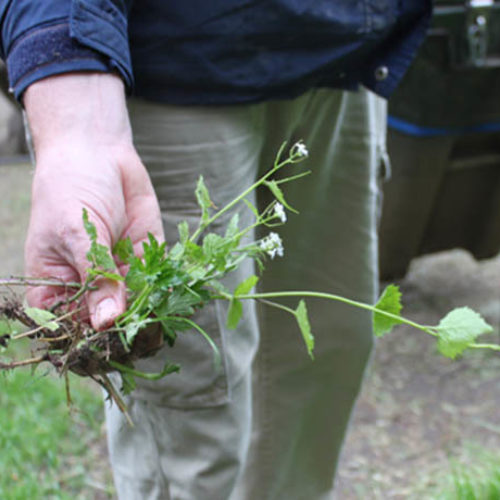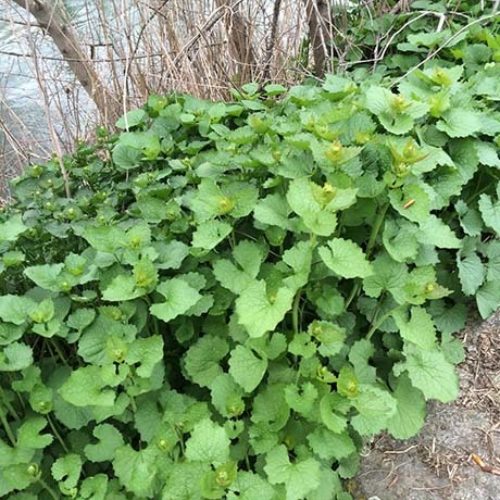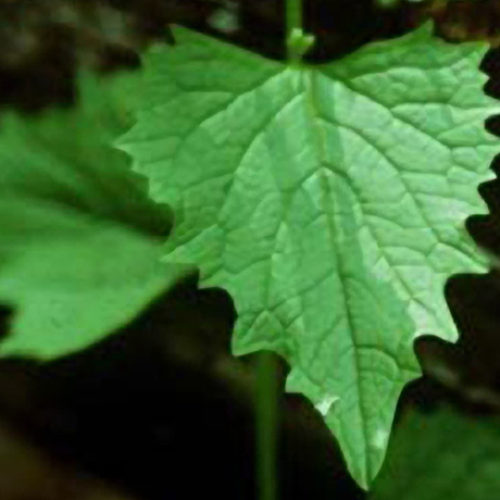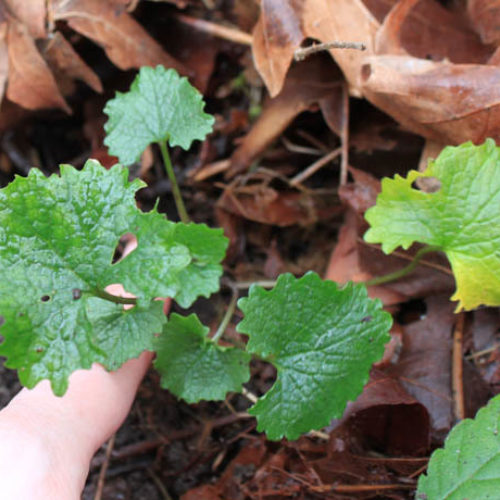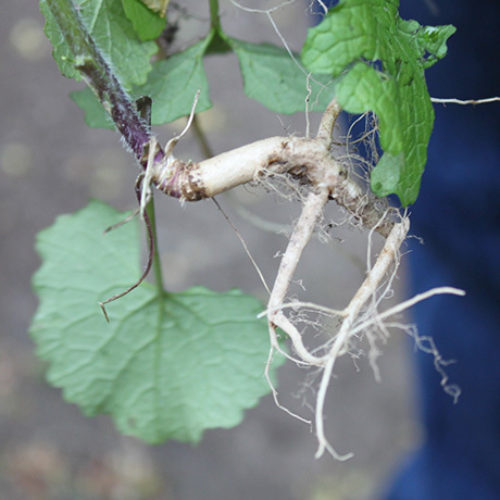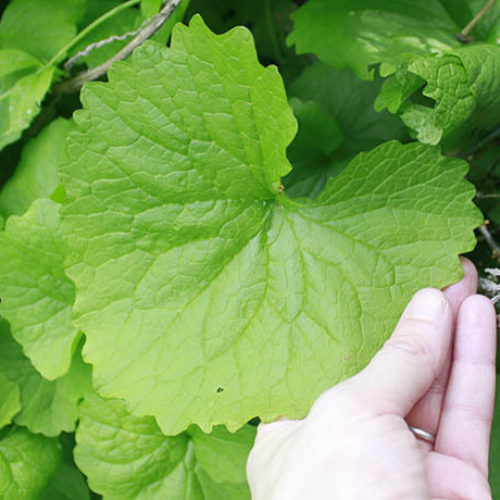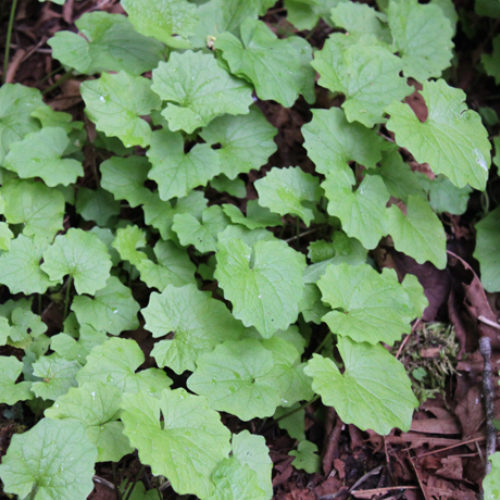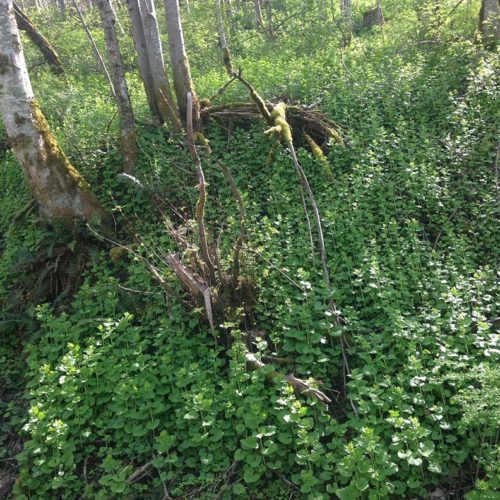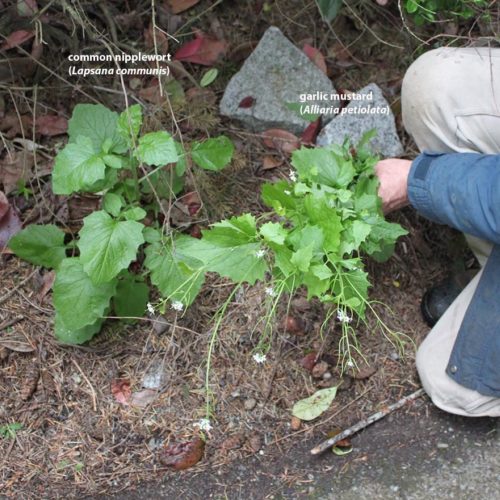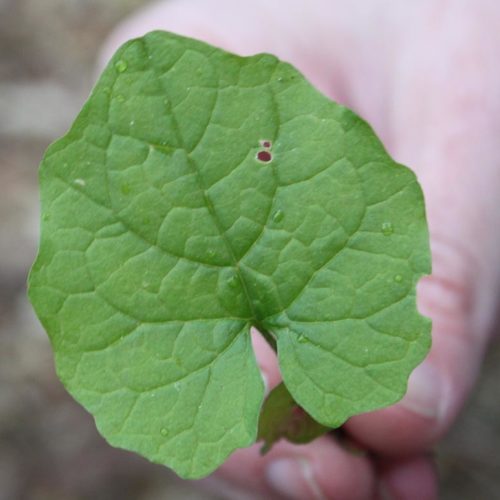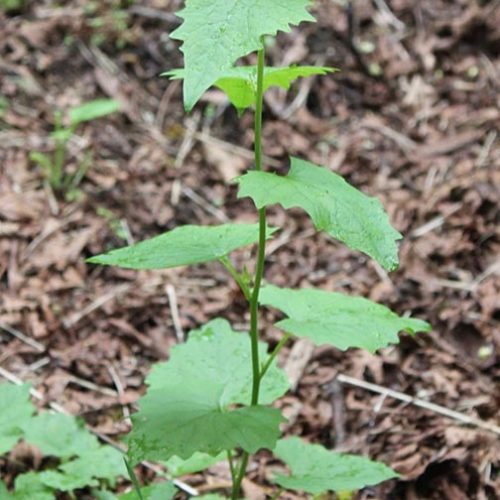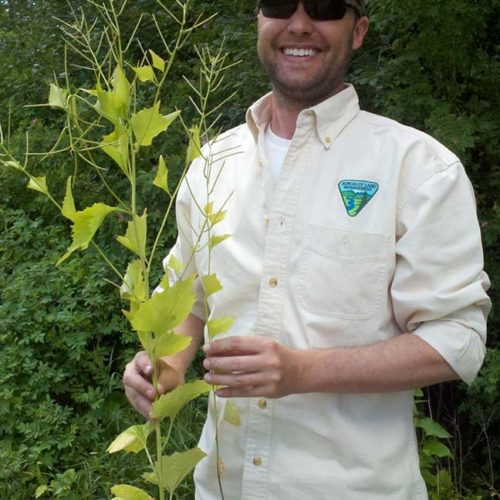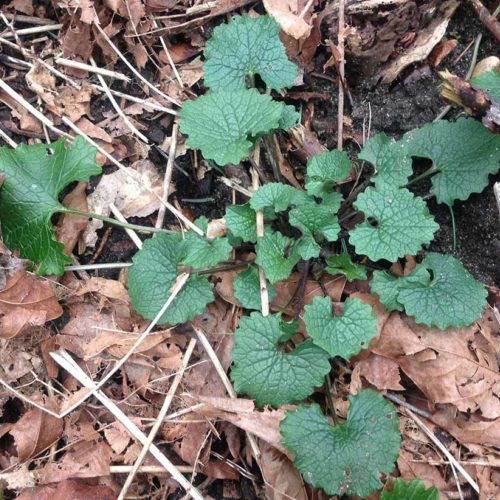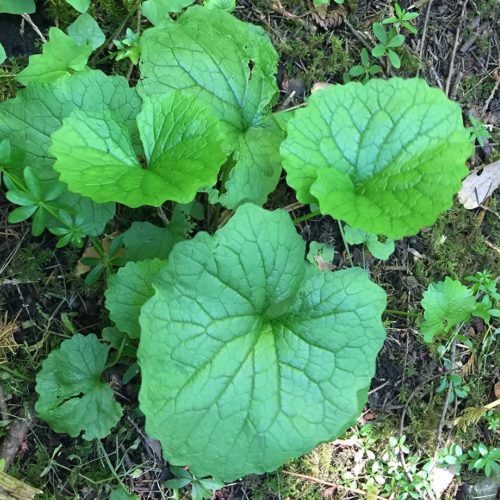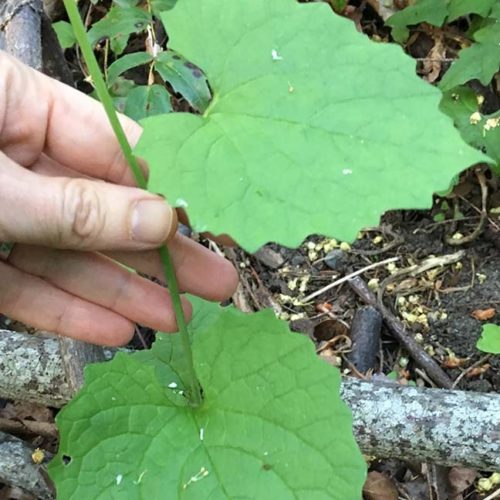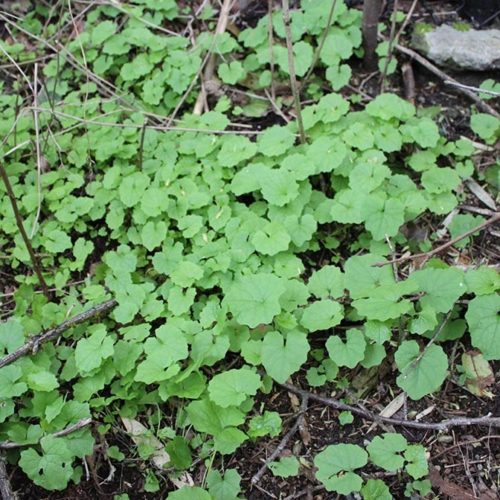Garlic Mustard
Alliaria petiolata
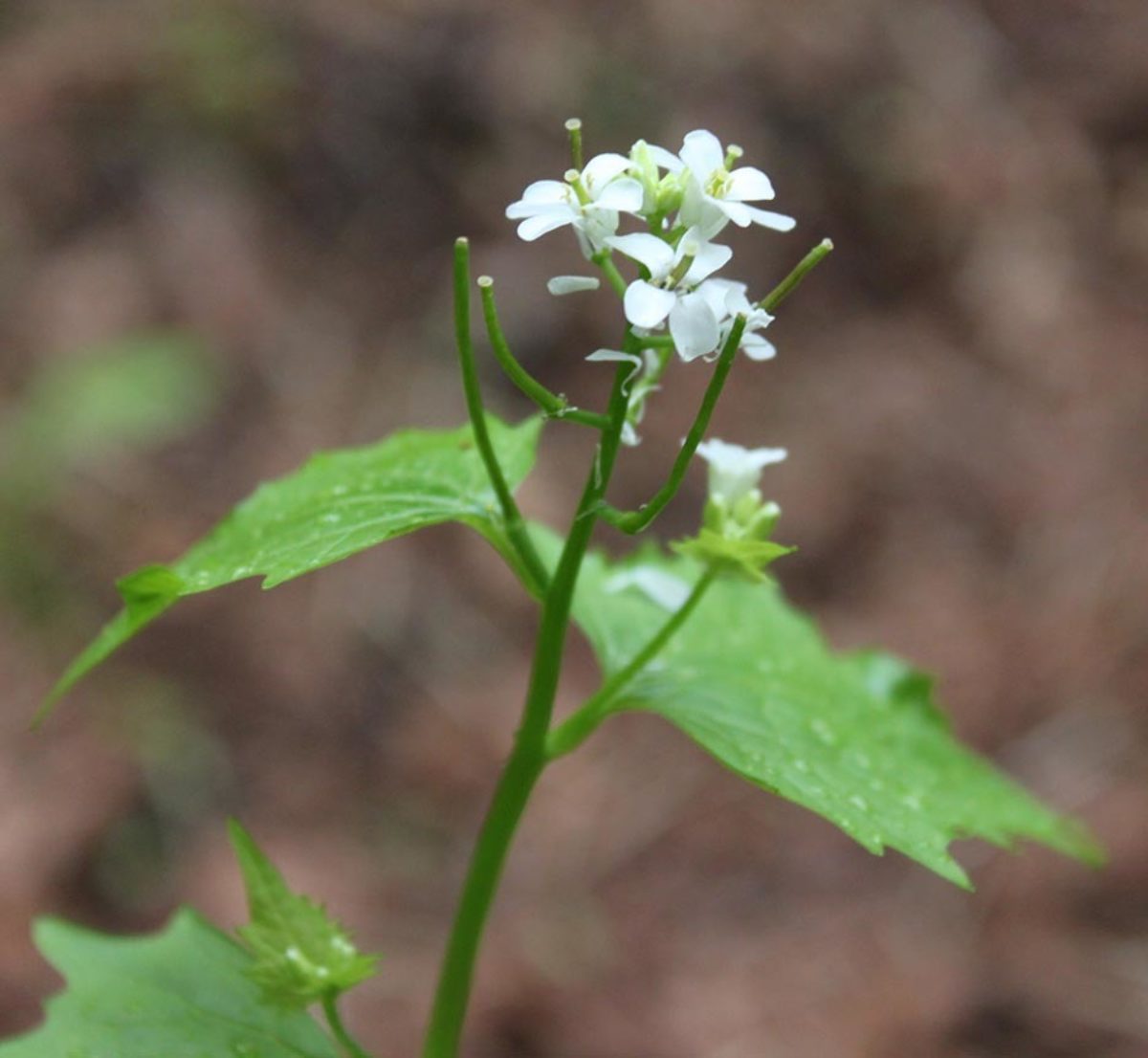
Family: Brassicaceae
Weed class: A
Year Listed: 2000
Native to: Europe, Asia and Northern Africa
Is this Weed Toxic?:
not known to be
Legal listings:
This plant is also on the Washington State quarantine list. It is prohibited to transport, buy, sell, offer for sale, or distribute plants or plant parts of quarantined species into or within the state of Washington or to sell, offer for sale, or distribute seed packets of seed, flower seed blends, or wildflower mixes of quarantined species into or within the state of Washington. Please see WAC 16-752 for more information on the quarantine list. For questions about the quarantine list, contact the Washington State Department of Agriculture's Plant Services Program at (360) 902-1874 or email PlantServices@agr.wa.gov.
Why Is It a Noxious Weed?
Garlic mustard’s vegetative growth starts early in the spring, outcompeting native and beneficial species that are still dormant. Its ability to reproduce high quantities of seed from a single plant can make it difficult to eradicate once it is well-established. Seeds can survive a number of years in the seedbank, prolonging its ability to dominate a site. Garlic mustard also changes the composition of a plant community by exuding chemicals that disrupt plant growth and certain plant-mycorrhizal fungi connections, which are important for tree seedling health.
How would I identify it?
General Description
Garlic mustard is a biennial to short-lived perennial plant that is garlic scented and can grow to a height of around 3 feet.
Flower Description
Flowers have 4 petals, 4 sepals and 6 stamens. Petals are white, about 1/4 inch long and are twice as long as the sepals.
Leaf description
Basal leaves are broad with rounded tips and rounded bases (kidney shaped). Upper stem leaves are alternate and triangular. Both leaf types have petioles (leaf stems). Leaf margins are coarsely toothed. New leaves have a strong garlic odor.
Stem description
Stems are generally upright and one to many can grow from a rosette (cluster of radiating leaves at base of plant). They may be branched or unbranched.
Fruit Seed Description
Seed pods long and slender, curving upward, up to 2.4 inches long. Seeds are dark brown to black, grooved and oblong in shape. Plants can produce up to 8,000 seeds.
Where does it grow?
In Washington State, garlic mustard is found in forested understory areas including urban parks, on roadsides, trails, railroad tracks, streambanks, fields, slopes and floodplains. Within the past couple of years, garlic mustard was found in two counties in eastern Washington. Please click here to see a distribution map of garlic mustard in Washington.
How Does it Reproduce?
Garlic mustard reproduces by seed. This plant is capable of cross-pollination as well as self-pollination.
How Do I Control It?
Mechanical Control
Hand pulling is an effective method and mature plants are easily pulled though care must be taken to remove all of the roots.
Cultural Control
Prescribed burning is a control option for large invasions of garlic mustard. Burning is recommended for 2 consecutive years to achieve effective control. Fires must burn hot enough to completely kill plants. If fires are too cool, plants may regenerate from root crowns, producing flower stalks that have higher seed production and result in higher seedling survival.
Biological Control
Several potential biological agents have been researched for the control of garlic mustard. They are Ceutorhyitchus alliariae and C. roberti, shoot-mining weevils that attack rosettes and bolting plants; Ceutorhynchus constrictus larvae destroys seeds; Phyllotreta ochripes, a flea beetle larvae found mining the root and root crown; Ophiomyia alliariae a shoot-mining agromyzid; and a weevil, Ceutorhynchus scrobicollis.
Herbicide Control
Please refer to the PNW Weed Management Handbook, or contact your county noxious weed coordinator.
For More Information
See our postcard for early detection information about garlic mustard (Alliaria petiolata).
See our Written Findings for more information about garlic mustard (Alliaria petiolata).
See our brochure on garlic mustard.
Plant Conservation Alliance fact sheet on garlic mustard
Report on garlic mustard from the book "Weed Control in Natural Areas in the Western United States"
Whatcom County NWCB Fact Sheet on garlic mustard
Cowlitz County NWCB Fact Sheet on garlic mustard
King County NWCB Fact Sheet on garlic mustard
Jefferson County NWCB Fact Sheet on garlic mustard
Pierce County NWCB Fact Sheet on garlic mustard
Clark County NWCB Fact Sheet on garlic mustard
Best Management Practices for garlic mustard from King County NWCB



